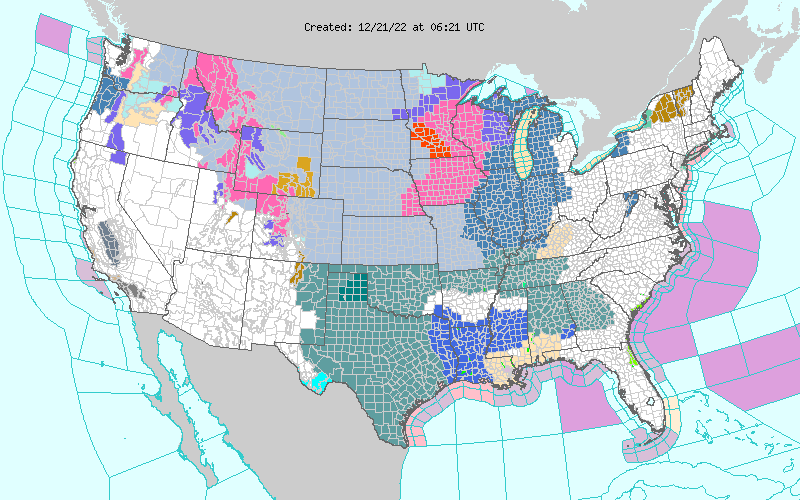
Many Americans will experience the coldest Christmas in decades as Arctic air pushes temperatures 50 degrees lower than usual.
A significant storm system is expected to hit most of the United States this week just in time for Christmas. This storm will also bring freezing and subzero temperatures to the nation's western, central, and northeastern parts.
The National Weather Service says it’s a "once in a generation type event," touching nearly every state in the US. More than 100 million Americans are currently under winter weather and wind chill alerts as record-breaking temperature drops are being observed.
Governors in Georgia, Oklahoma, and Kentucky have each declared a state emergency, Major cities in the South -- including Nashville, Memphis, Birmingham, Alabama, and Jackson, Mississippi -- are all expected to see snow today
The sweeping cold front could reach as far south as Texas and Florida. A massive Christmas snowstorm may cause temperatures to plummet to frigid lows across most of the USA.
This coming storm is set to become a blizzard, according to the National Weather Service. Here’s how special a blizzard warning is and what conditions would prompt the NWS to sound the 🚨 alarm.
A major winter storm is expected this week and is poised to become a bomb cyclone, bringing heavy snow, blizzard conditions, and high winds to the East Coast. The storm will also bring in cold air to much of the country, including Texas and Florida. A bomb cyclone occurs when a storm system undergoes bombogenesis—when its central pressure drops rapidly within 24 hours.
So far,17 states are under winter storm warnings, watches, and advisories through the holiday weekend. Wind chills are expected to be as low as 60 below zero in some areas, such as the Dakotas, and wind gusts are expected to be as high as 55 mph, including in Chicago. Hundreds of flights have also been canceled.
The official definition of a blizzard is visibility reduced to one-quarter mile due to falling snow or blowing snow, and wind gusts of 35 mph or greater. These conditions also have to be expected to last for hours.
Human-caused climate change fuels wetter, stormier Arctic Report Card features Indigenous observations and knowledge
https://www.noaa.gov/news-release/human-caused-climate-change-fuels-war…
WARNING